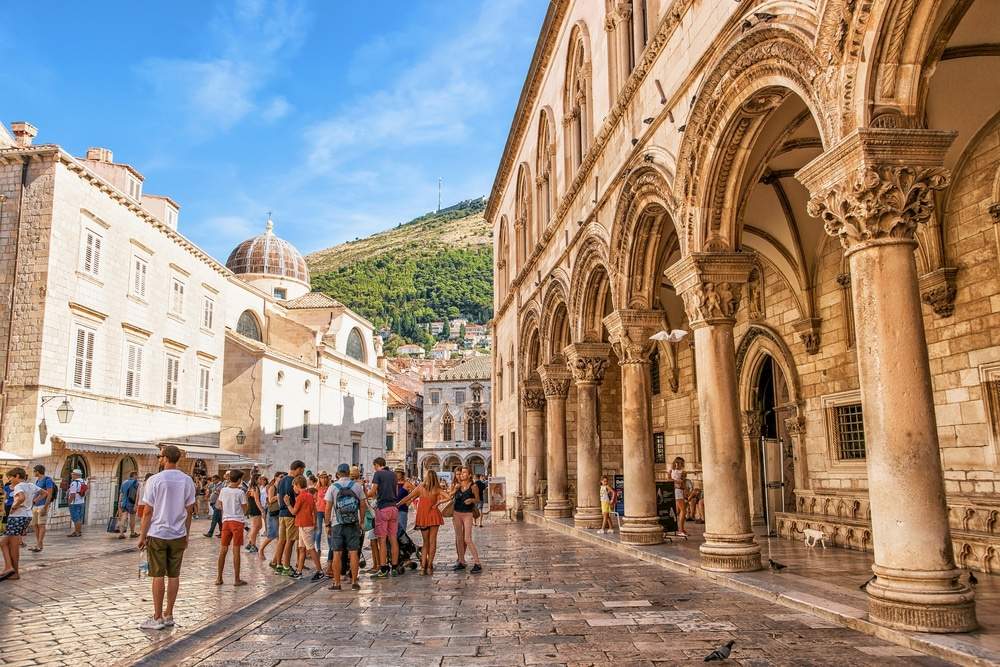Croatia is working with some European countries to save the tourism season. The Balkan country is heavily dependent on this sector, which constitutes 20 percent of its Gross Domestic Product and is 90 percent supplied by foreign tourists.It is therefore unthinkable that Croatia could replace it with domestic tourism, and a collapse of the sector could have devastating effects on a country that depends on tourism for one-fifth of its economy. That is why tourism corridors are being studied: direct links to countries where the epidemic appears to be under control, or at least better than others considered more at risk.
Last April 19, the Croatian news agency Hina reported that Prime Minister Andrej Plenkovic had begun talks with his counterparts from Austria, Hungary and the Czech Republic to study solutions that would allow tourists from these countries to arrive in Croatia. The idea of “tourist corridors” had been devised by tour operators from the Czech Republic (Czechs consider Croatia to be their sea: last year, 800,000 Czech tourists vacationed in Croatia): the national trade association has come up with a model such that Czechs who want to travel to Croatia or Slovenia would be able to obtain a health certificate declaring their non-positivity to the coronavirus and able to allow them to travel via air or road corridors intended only for the travel of healthy tourists who, upon arrival, would not be obliged to the fourteen-day quarantine that many countries impose on those arriving from outside.
“We are already discussing these proposals with the Czech Republic,” Gari Cappelli, Croatian minister of tourism, let it be known in a speech on Croatian radio station HRT. And Austrian Chancellor Sebastian Kurz also let it be known that there had been an exchange of messages in private with Andrej Plenkovic: “We discussed about a coordinated approach to reopening tourism in our countries, about seasonal workers and border controls,” Kurz said.
These proposals, predictably, are excluding Italy, since our country is considered particularly at risk. But on the tourist corridors, Germany is holding back: according to Foreign Minister Heiko Maas, it is still too early to reopen borders for tourism-related reasons (the negative example is the ski resort of Ischgl, Austria, which is considered as one of the first European epicenters of the infection). “A race to see who will reopen tourist travel first,” Maas told the German newspaper Bild yesterday, “will involve unacceptable risks. We have already seen what an outbreak that develops in a popular tourist destination can do to tourists’ countries.” The reference is precisely to the case of Ischgl. And for Germany, tourism is also a problem: according to the Deutsche Reiseverband (DRV), the association of German tourism businesses, 60 percent of the country’s travel agencies and tour operators are at risk of insolvency, and one in five companies have already triggered layoffs, while 80 percent have applied for state aid.
However, the Bild, last April 25, also published an article identifying Croatia as a possible “crown-free” destination for this summer. So if the “axis of tourism” were to involve Germany as well (perhaps because Germans, Croatians, Czechs and, in general, Eastern European countries will have been better able to contain the epidemic and put in place less restrictive measures than those in Italy), for Italian tourism the damage could be even greater given the amount of German tourists who visit our country each year.
Image: tourists in Dubrovnik, Croatia.
 |
| Tourism, Croatia studies corridors with some European countries (Italy excluded) to save the season |
Warning: the translation into English of the original Italian article was created using automatic tools. We undertake to review all articles, but we do not guarantee the total absence of inaccuracies in the translation due to the program. You can find the original by clicking on the ITA button. If you find any mistake,please contact us.